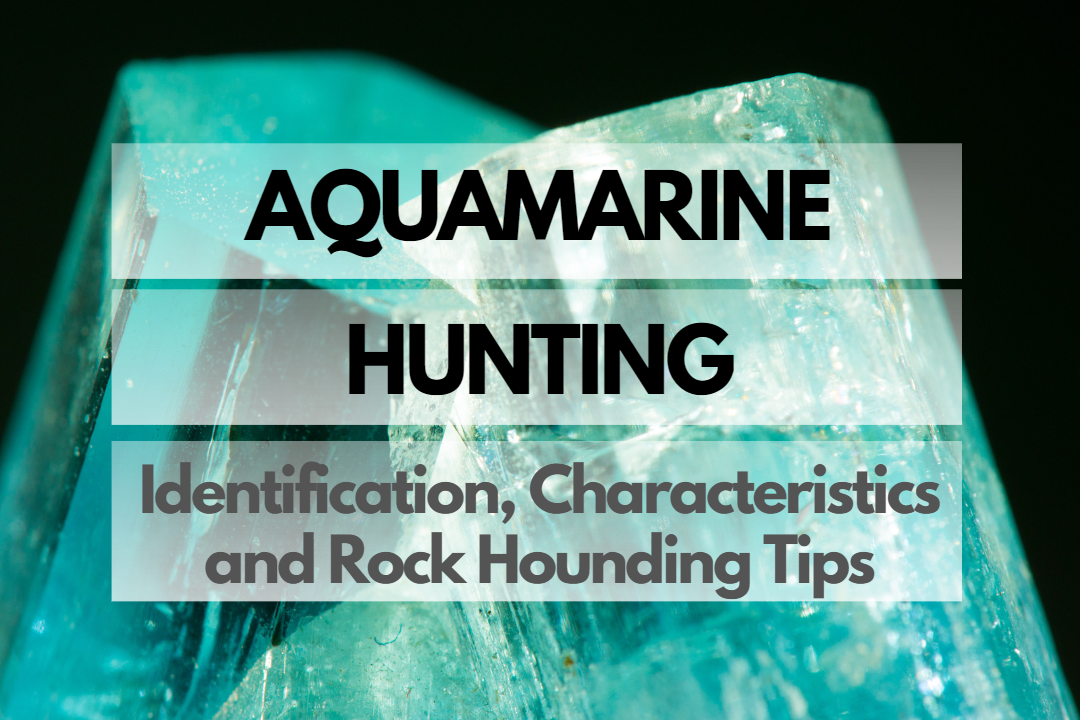Embark on a thrilling adventure in search of the enchanting Aquamarine, a gemstone renowned for its captivating blue hues and serene energy. Join us as we delve into the fascinating history, identification tips, and uses of this alluring gemstone to inspire your own Aquamarine hunting journey.
History & Origin of Aquamarine
Aquamarine, a variety of the mineral beryl, has captivated humankind for centuries with its stunning blue shades. Its name originates from the Latin words “aqua” (water) and “marina” (sea), reflecting the gemstone’s watery blue hues. Aquamarine has held cultural significance in various societies, with ancient Romans and Greeks believing the gemstone possessed calming and harmonizing powers. Sailors once carried Aquamarine as a talisman for safe voyages, while in medieval Europe, it was believed to sharpen the intellect and bestow eloquence.
Aquamarine Identification & Physical Properties
Here’s an overview of Aquamarine’s physical properties to assist you in identifying this mesmerizing gemstone:
| Property | Value |
|---|---|
| Chemical Formula | Be?Al?Si?O?? |
| Color | Blue, greenish-blue, pale blue |
| Hardness (Mohs scale) | 7.5-8 |
| Crystal System | Hexagonal |
| Luster | Vitreous |
| Transparency | Transparent to translucent |
| Refractive Index | 1.567-1.590 |
| Specific Gravity | 2.68-2.74 |
Aquamarine Colors
Aquamarine exhibits a range of blue hues, from pale, almost colorless blues to vibrant greenish-blues. The most valuable Aquamarine gemstones display a vivid, deep blue color, while lighter shades are more common and affordable. Heat treatment is often used to enhance the gemstone’s color and remove any greenish tints.
Aquamarine Hardness
With a hardness of 7.5-8 on the Mohs scale, Aquamarine is a relatively durable gemstone suitable for various types of jewelry. Its durability, combined with its vibrant color and vitreous luster, make it a popular choice for rings, necklaces, and other accessories.
Aquamarine Types
Blue Aquamarine
Blue Aquamarine is the most sought-after variety, featuring shades ranging from pale sky-blue to deep ocean blue. The most valuable specimens showcase a vivid, intense blue hue.
Greenish-Blue Aquamarine
Greenish-blue Aquamarine bears a subtle green tint, adding an extra layer of depth to the gemstone’s color. While not as highly prized as pure blue stones, greenish-blue Aquamarines are still beautiful and desirable.
Aquamarine Uses
Aquamarine has a variety of uses, including:
- Jewelry: Due to its durability, beautiful color, and luster, Aquamarine is commonly used in rings, necklaces, earrings, and other jewelry pieces.
- Carvings and sculptures: Aquamarine’s hardness allows for intricate carvings and artistic sculptures.
- Collectible specimens: Large, high-quality Aquamarine crystals are sought after by mineral collectors and enthusiasts.
- Meditation and energy work: Some practitioners incorporate Aquamarine into meditation and energy work for its reputed calming and harmonizing properties.
How Much Is Aquamarine Worth?
The value of Aquamarine depends on factors such as color, clarity, carat weight, and cut. Gem-quality stones with a deep, vivid blue color command the highest prices, sometimes reaching hundreds of dollars per carat. On the other hand, lighter-colored, more common Aquamarines can be quite affordable, costing as little as $20 per carat. Keep in mind that the market value of Aquamarine can change over time, so staying informed about current prices is always a good idea.
Aquamarine Rock Hounding Tips
Ready to embark on your Aquamarine hunting adventure? We’ve got you covered with essential tips and tricks to make your quest for this mesmerizing gemstone a successful and enjoyable experience.
Essential Tools and Equipment
Before setting out on your Aquamarine hunting expedition, make sure you’re equipped with the right tools and gear:
- Rock hammer: For breaking open rocks and extracting specimens.
- Chisel and safety goggles: To split rocks and protect your eyes.
- Hand lens or magnifying glass: To examine your finds up close.
- Field guide: To help with identification and information on local geology.
- Sturdy gloves and backpack: To protect your hands and carry your finds.
- GPS or map: To navigate your way around the hunting area.
Safety Tips
When rock hounding, always prioritize safety with the following precautions:
- Wear appropriate protective gear, including gloves, sturdy shoes, and safety goggles.
- Stay hydrated and bring enough food and water for the duration of your trip.
- Inform someone of your plans and expected return time.
- Be aware of your surroundings and follow local rules and regulations.
Aquamarine Hunting: Where to Find Aquamarine
While Aquamarine can be found in various locations worldwide, some of the best-known sources include Brazil, Madagascar, Nigeria, and Pakistan. To help you plan your Aquamarine hunting adventure, we’ve compiled a table detailing specific sites and regions where you can find this captivating gemstone:
| Site/Area | City/State/Country |
|---|---|
| Minas Gerais | Brazil |
| Ilha Claim | Madagascar |
| Jos Plateau | Nigeria |
| Shigar Valley | Pakistan |
| Mursinka | Russia |
| Colorado and Wyoming | United States |
Caring For Your Aquamarine
To maintain your Aquamarine’s beauty and luster, follow these care tips:
- Store your Aquamarine separately from other gemstones to prevent scratches.
- Clean your Aquamarine with mild soap, warm water, and a soft brush or cloth.
- Avoid exposing your Aquamarine to harsh chemicals or extreme temperature changes.
Additional Resources
For further information and guidance, explore these helpful resources:
- Geological Survey of Brazil, Madagascar, Nigeria, and Pakistan: Government websites provide information on local geology and gemstone occurrences.
- Mineralogical Society of America: Articles and research on minerals, including Aquamarine.
- Rockhounding forums and communities: Online platforms where enthusiasts share tips, experiences, and knowledge.
- Books: Comprehensive guides on rock hounding, gemstone identification, and geology.
Additional Aquamarine FAQs
What are the benefits of Aquamarine?
Aquamarine is prized for its stunning blue color, durability, and luster, making it an ideal choice for jewelry, carvings, and collectible specimens. It is also believed to possess calming and harmonizing properties.
Do Aquamarine have any healing properties?
While there is no scientific evidence to support healing properties, some people believe that Aquamarine may help alleviate stress, provide emotional balance, and promote clear communication.
Do Aquamarine have any spiritual meaning?
In various cultures, Aquamarine has been associated with protection, harmony, and spiritual growth. It is often used in meditation and energy work for its reputed calming and balancing energies.
Do I needa permit to go Aquamarine hunting?
In some locations, you may need a permit to go rock hounding for Aquamarine or other minerals. Be sure to check local regulations and visit the Bureau of Land Management website for more information on obtaining a permit in the United States.
Closing Thoughts
Now that you’re equipped with the knowledge and resources to embark on your Aquamarine hunting journey, it’s time to head out and discover the captivating beauty of this gemstone for yourself. Remember to prioritize safety and respect local regulations, and most importantly, enjoy the thrilling experience of uncovering nature’s hidden treasures. Happy rock hounding!

